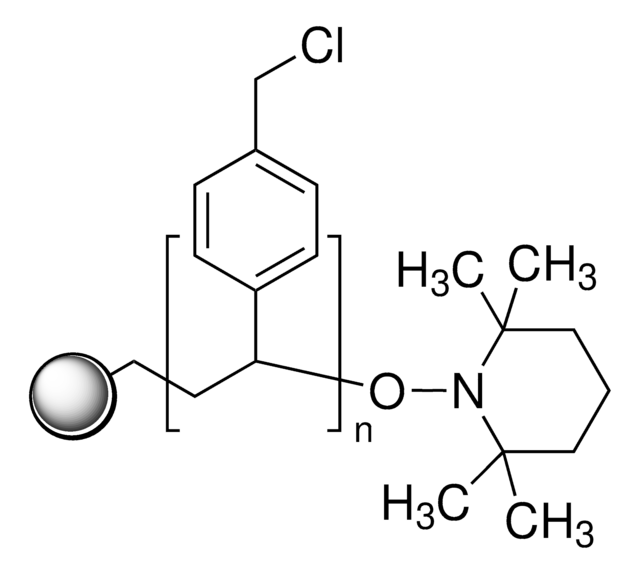644714
Pd EnCat® 30
extent of labeling: 0.4 mmol/g Pd loading
Sinonimo/i:
Palladium acetate, microencapsulated in polyurea matrix
About This Item
Prodotti consigliati
contiene
0.37-0.44 mmol/g palladium
Livello qualitativo
Impiego in reazioni chimiche
core: palladium
reaction type: Buchwald-Hartwig Cross Coupling Reaction
reaction type: Heck Reaction
reaction type: Hiyama Coupling
reaction type: Negishi Coupling
reaction type: Sonogashira Coupling
reaction type: Stille Coupling
reaction type: Suzuki-Miyaura Coupling
reagent type: catalyst
Grado di funzionalizzazione
0.4 mmol/g Pd loading
Descrizione generale
Applicazioni
Caratteristiche e vantaggi
- low residual metal levels in crude product
- easy recovery of catalyst
- compatibility of immobilized metal with various ligands to effect C-C bond forming reactions
- safer and easier to handle than Pd/C for hydrogenation
- efficiency and economy gains through recovery and recycling
Altre note
Note legali
Avvertenze
Danger
Indicazioni di pericolo
Consigli di prudenza
Classi di pericolo
Aquatic Chronic 3 - Eye Irrit. 2 - Flam. Sol. 2 - Repr. 1B - Skin Irrit. 2 - STOT RE 2 Inhalation
Organi bersaglio
Nervous system
Classe di pericolosità dell'acqua (WGK)
WGK 3
Dispositivi di protezione individuale
Eyeshields, Faceshields, Gloves, type P3 (EN 143) respirator cartridges
Scegli una delle versioni più recenti:
Possiedi già questo prodotto?
I documenti relativi ai prodotti acquistati recentemente sono disponibili nell’Archivio dei documenti.
Articoli
Sigma-Aldrich offers EnCat and a variety of transition metal-based encapsulated catalysts for applications in areas such as Suzuki, Stille, and Heck couplings, carbonylations, hydrogenation, hydrogenolysis, and dihydroxylation.
Il team dei nostri ricercatori vanta grande esperienza in tutte le aree della ricerca quali Life Science, scienza dei materiali, sintesi chimica, cromatografia, discipline analitiche, ecc..
Contatta l'Assistenza Tecnica.


